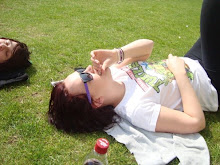


Attempt to include information on-Context- Gallery info & history, curatorial issues etcA physical description of at least one workTheoretical contextualization and analysis- linking to theoretical ideas and using quotes etcInfo about the artist(s) / designer(s)A critique of the curatorial strengths and weaknesses of the show



The exhibition, curated by Penelope Curtis, celebrates the work of Edinburgh-based artist Alan Johnston, who had the HMI closed to the public for 4 weeks whilst single-handedly constructing his drawings upon the main gallery’s towering walls. The drawings themselves – short, sporadic pencil marks confined within meticulously precise lines, spanning the length and breadth of the vast, crisp white walls – are used as illusive tools to bring the architectural qualities of the gallery space to life, deeming it a work of art in its own right.
The minimalist nature of the exhibition draws obvious parallels with the Modernist movement; the pencil marks constrained to rigorously architectural forms are comparative to that of Mondrian’s linear compositions, in which the presence of the piece is marked by its bold use of right-angled structures. Yet it’s site specific nature and manipulation of the viewers experience of a given space holds feint echoes of the early works of James Turrell, who described his collision of light, shape and space not as minimalist or conceptual, but as ‘perceptual’.
In conjunction with the powerful wall drawings, the exhibition also features a series of comparatively minute pencil drawings applied to plaster, lino and wood dispersed at eye level amongst the galleries corners, alongside two sculptural, engineered spaces displayed upon plinths in the centre of the furthest room. The inclusion of such pieces is undoubtedly the only questionable aspect of the curatorial process. The bold decision to exclude any form of introductory text or titling was a demonstration of ingenuity on Curtis's part – such a feature would have seen confused visitors flock to it, unwilling to trust their own interpretation, seeking some form of justification. And yet these small, tiled drawings seem to contradict that very point; detracting away from the sheer magnitude of everything else in the room. Having said that, there is something to be said about their positioning: in the opposite corner to the doorway in each of the three large rooms, forcing the viewer to cross the space, physically dissecting it and gaining another vantage point.
‘Drawing a Shadow’ will unquestionably be met with criticism by those unwilling to deviate on their traditionalist views of sculpture. However, regardless of whether you conceive Johnston’s work inspirational or a mere act of pretension there is no doubt in my mind that this exhibition merits a visit simply to experience, if anything, the sheer humility, exposure and awe inflicted upon the individual by this haunting space.
Graphic designer, critic and educator, Michael Bierut responded to such claims with a solid contradictory defense in his analysis: Ten Footnotes to a Manifesto. He casts doubt upon the credibility of the 33 signatories who collectively ‘specialize in extraordinarily beautiful things for the culturally elite’ (Bierut 2002. p. 27) and have no experience to speak of within corporate design. Designers, he argues, view the advertising world with a ‘measure of envy’ due to their ranking within the creative industry; ‘graphic designers have long dwelled at the bottom of the pond’ (Bierut 2002. p. 27.) Also addressed is the manifesto’s link between advertising and society’s apparent consumer-driven morality nose-dive, disputing that some of the most successful work for social causes (HIV awareness and gender equality within the arts) has been a product of advertising, something First Things First wishes us to believe is comprised predominantly of manipulation and deceit.
As Poyner so eloquently puts it, the 2000 manifesto draws attention to the ever growing distinction between ‘design as communication (giving people necessary information) and design as persuasion (trying to get them to buy things)’. It is completely irrational to deny that advertising can be a useful tool to society but at present ‘we have absorbed design so deeply into ourselves’ that progression from a creative education into a commercial design background seems completely natural and unquestionable. (Poyner 2002. p. 8, p.6)
In comparison, Matt Soar offers a relatively impartial analysis of the declaration and focuses primarily on answering the question of which echelons of society are likely to be affected and to what degree. In his text, First Things First: Now More Than Ever, he asserts that, on the most basic of levels, the manifesto aims to encourage designers to ‘address their many audiences as citizens rather than consumers’ (2002. p. 13.). A view echoed to some extent by Bierut who adamantly claims that commercial design and social virtue need not be separate entities at all, stating that the most admirable designers have always managed ‘to align the aims of corporate clients with their own personal interests and, ultimately, with the public good.’ (Bierut 2002. p. 30.)
Bibliography
Garland, K. (1964) First Things First. In Bierut, M., Helfand, J., Heller., S., Poyner, R. eds. (1999) Looking Closer 3. New York: Allworth Press. Pp. 154-155.
First Things First 2000. (1999) In Bierut, M., Drenttel, W., Heller. eds. (2002) Looking Closer 4. New York: Allworth Press. Pp. 5-6.
Poyner, R. (1999) First Things First: A Brief History. In Bierut, M., Drenttel, W., Heller. eds. (2002) Looking Closer 4. New York: Allworth Press. Pp. 6-10.
Soar, M. (1999) First Things First 2000. In Bierut, M., Drenttel, W., Heller. eds. (2002) Looking Closer 4. New York: Allworth Press. Pp. 10-13.
Bierut, M. (2000) A Manifesto with Ten Footnotes. In Bierut, M., Drenttel, W., Heller. eds. (2002) Looking Closer 4. New York: Allworth Press. Pp. 26-31.
